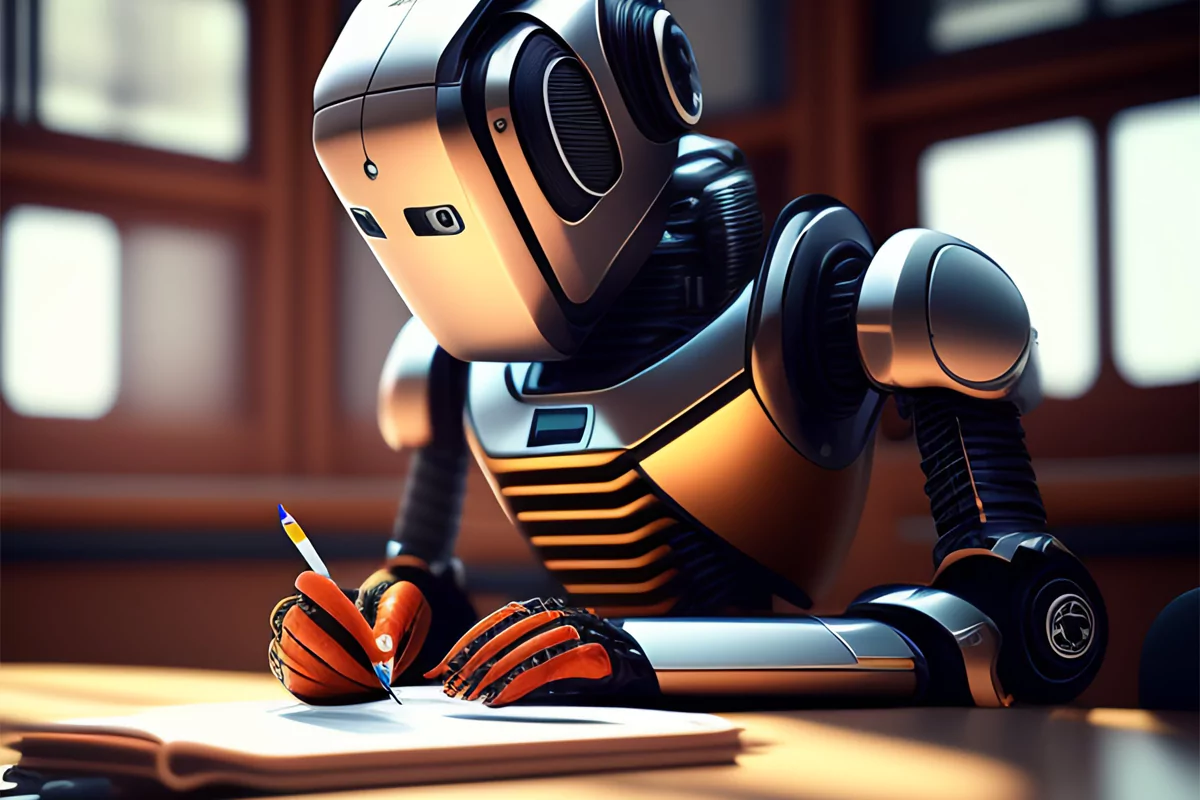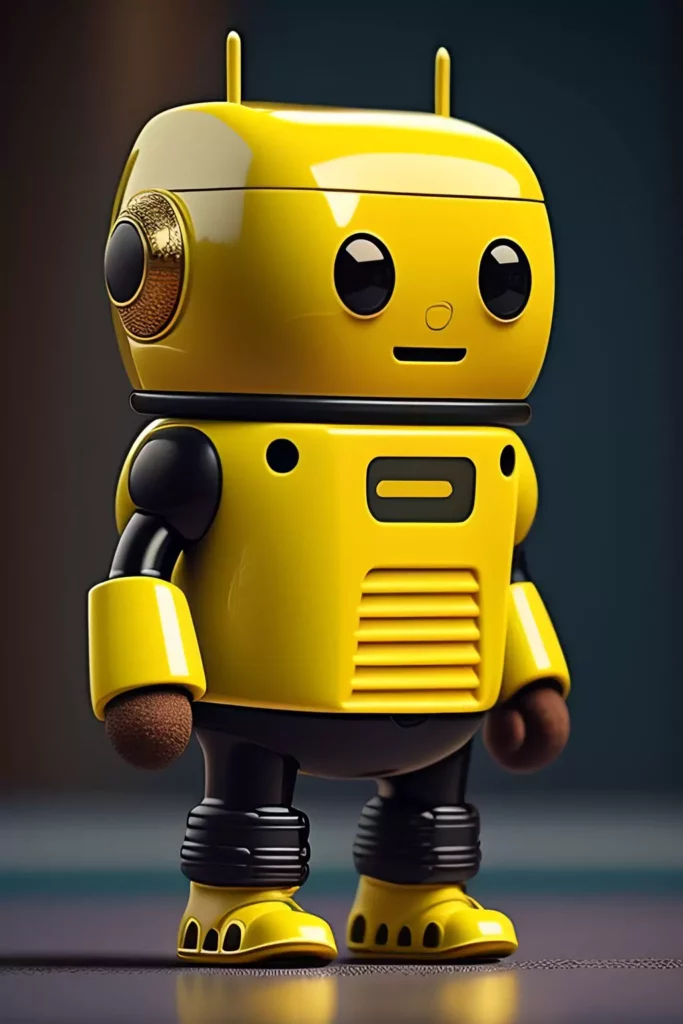Yes, you really can detect ChatGPT Generated Text. We will show you how

Previously we have created guides on how to detect AI written content, for this article we are going to focus on just ChatGPT, this is the most advanced Chatbot on the market today. This is basically an AI content creator that everyone is pretty much using. So it makes perfect sense for us to want to detect this kind of content.
With the latest release of GPT-4 ChatGPT has become an amazing tool for content creators all over the world. So are we going to sit back and let the bots take over our online content or are we going to fight back and find ways on how we can detect ChatGPT-Generated text?
Most of the time, the text ChatGPT generates can quite easily be detected by those who are familiar with the AI content this tool provides. Some examples are not feeling or depth to the conversation, no use of synonyms, repetition of words and even using long winded sentences.
With the release of their latest model GPT-4 it has become a little bit harder as it’s aim is to mimic humans, better than ever before. But there are still thing you can look out for to determine weather or not the content you are reading was created by Artificial Intelligence (AI) or by a human.
We take a closer look at some of the ways that you can detect weather or not content is created with AI.
Let’s Look For the Obvious – Visual Signs

The most reliable source you can have when looking for AI written content created with ChatGPT is the overall view of said written content. To most users this content might seem “invisible” and not noticeable, but to a well trained eye these indicators stick out.
We walk you through some visual indicators that you should be looking out for when trying to find out weather or not that article you were provided with was created by a human or by crafty AI.
AI Tends to Waffle on: Long Sentences, Repeated Ideas, No Use of Synonyms
Want to know the biggest visual aspect when looking if content was written with ChatGPT? Well as we have found out it’s normally long sentences, seriously it does not half waffle on. ChatGPT tends to write like it’s writing an adult novel, not something that can easily be consumed for an online reader.
You might have noticed this if you have used this AI chatbot recently. Ask it any question, anything at all and you will see the long winded response. It’s not short, sweet and to the point, it’s response leaves you feeling like “what on earth did I just ask?”. This might be good if you are writing a scientific paper, but simple reading purposes it is not a good process to go through.
ChatGPT seems to love sentences that are far too long. This leads to words being over used. Think of common words like “the”, “these”, “it” etc. Everyone that has passed a standard level of English knows to limit these types of words and also keep sentences short. They need to be easy to digest and this is something ChatGPT has a real hard time trying to do. Ask yourself does the content you are reading use a variety of words, synonyms and such? Is it really targeting the age range of the reader?
One good thing ChatGPT is capable of doing is fooling people to belive the content it provides is awesome. It may look great, the structure, the layout, it ticks all the boxes. Well until you start actually reading the content and realising how it’s repetitive nature in it’s words use and ideas, quickly becomes annoying. This is why we try to explain to our users how to increase the quality of the response ChatGPT gives you.
Lack of Emotion, Personal Opinions but instead Factual Based Responses
Have you recently read an online article in the past 6 months and thought to yourself “wow that was so robotic”. Well this might just well be the case.
We have used ChatGPT countless times over the past few months as it’s a great tool to work with. But the number one issues we notice is it’s lack of emotion, seriously it’s literally like talking to a robot. Sure you can give it a role to act as and it might try to imitate some emotion, but it still falls short of this.
This AI chatbot also has no personal opinions, this might be down to legal reasons or it might just be the fact it isn’t capable of it. Next time you read an article, look for anything that ties the article to the writer. Is their any personal views, emotions, or even the odd joke here and there?
Sure some of the articles created with ChatGPT might be good for a certain type of audience, but personally we feel it’s lacking and not an enjoyable read for the user. Feelings and emotions are what make an article enjoyable for a reader, without those it can easily put readers off and not want them return to view your content.
Let’s be reasonable here a lot of companies out source their work, no one person can write 100’s of articles a day. Some of these companies have resorted to using AI to write their articles. This has lead to a huge spam of poorly written AI content, this is not good for readers online.
This is where the dark side of ChatGPT comes into play, bad actors creating spammy online content. This is why we created this online guide. Weather you are purchasing articles for your website or reading them. You need to know that these were created with good intentions and of course of good value. It’s not wrong to use AI to help create content, no far from it. It should be used as a tool to aid people.

Use Tools to Detect AI for You
As AI written content has become so popular over the past few months, so have tool that can detect this type of content. You can now use tools (both paid for and free) to detect AI generated text. These tools are normally setup to detect text that has been created GPT models like: GPT-4, GPT-3, GPT-2, GPT-J, and GPT-NEO.
If you want to detect AI content right now we found this was the best tool on the market right now, it’s also free to use!
AI Detection Tools
There are plenty of detection tools available to the general public scattered all over the internet. They have the ability to detect sentences and paragraphs that may have been created using ChatGPT. But please be warned these tools are not perfect they should not be the only way you detect if your content was created with the use of AI. You should also use the steps we mentioned at the beginning of this article.
There is one downside to using these kind of detectors though. That downside is that from time to time they might say that something written by a person, was written by AI. This is because some writers online do write in a rather robotic way. So technically this tool is assuming you’re a bot, due to the style of writing it has read through.
Some of these detectors look for certain words being used, so to avoid them all a person would need to do is just stop using those kind of words. Avoid the patterns and you can avoid detection. This isn’t really good moving forward.
As these technologies become more advanced, we will start to see the humble chatbot evolve. We could expect to see the following changes:
- Has more emotion
- Includes personal opinions
- More fluid in their writing
- Breaks sentences up more human-like
All this is in an attempt for this new technology to learn how to write like a human.
In the future AI might become so advanced that ChatGPT will be able to avoid detection. This is where other measures will need to be put in place.
Watermarks
This is quite a hot topic for debate. There has been rumours that some researchers are exploring the possibilities of being able to use watermarks. These would help identify weather or not ChatGPT was used in creating content.
This could come in many shapes and forms. The basic form would be looking for word patterns. So a tool would scan the article and see if these patterns show up, if they do it would be added up as a point scheme. Once the point scheme goes over it’s target it will be declared “written by ai”. This is more of a simpler way of detecting AI. But as we mentioned before one someone learns the algorithm they can learn how to avoid detection.
Another key to look for would be how perfect the written post is. We all know how people write and sometimes they do no adhere to grammar rules. They might make typos, spelling mistakes or just forget about structures. ChatGPT does not do this, it does waffle on but it ensures it’s grammar is correct.
A rather creative idea of how to watermark text written with ChatGPT would be to inject it into the text. We don’t mean an image watermark, we are referring to hidden code. It could either be hardcoded, or it could be a simple thing as putting a ” “after a “.”. Hidden punctuations or silly mistakes that could let users know ChatGPT was involved in the creation of this article.
But let’s not get ahead of ourselves here. These are just concept ideas right now and due to the speed AI is evolving they might become obsolete before they ever get released.
Is Competition really that healthy within the AI Detection Space?
Look let’s face it healthy competition helps the markets grow and almost always benefits the end users. But and this is a big but, when it comes to Large language models this race might prove to be a step too far.
These LLM’s are constantly pushing boundaries and becoming more and more human everyday. What we need to ask ourself is that once these chatbots are perfected and they seem more human than even our own selves.
Will these detectors assume that all human written content is actually fake? Maybe, maybe not but it is food for thought.
Conclusion
Here at So Artificial we love AI, we eat and breath the stuff. But when it comes to using AI as an act of spam or something that isn’t in the best interest of it’s consumers. Then of course we are going to be heavily against it.
This is why we agree that AI content detectors that detect content created by ChatGPT and others LLM’s should be created and used. The last thing we want is the internet to be filled with bot articles that give a pretty poor reading experience.
What do you think about all of this? are you for or against AI content detectors? If so do you use one on a daily basis. Let us know in the comments below.

























